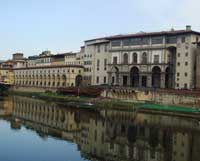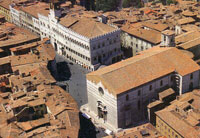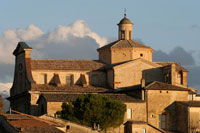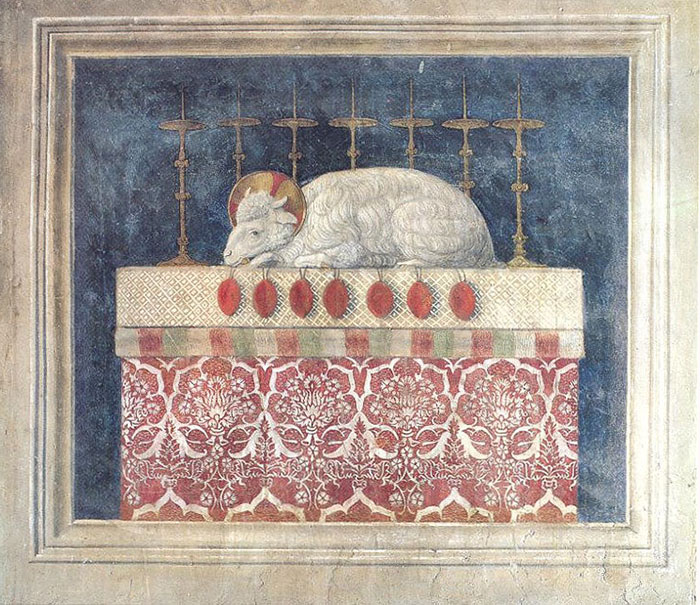 |
| |
The wall paintings of Benozzo Gozzoli in Palazzo Medici Riccardi, Florence The Mystic Lamb |
| Benozzo Gozzoli (c. 1421 - 1497) was an Italian Renaissance painter from Florence. He is best known for a series of murals in the Palazzo Medici-Riccardi depicting festive, vibrant processions with wonderful attention to detail and a pronounced International Gothic influence. 'Up to the end of the nineteenth century, when the original entrance to the chapel was closed up (1875-1876), the visitors and the faithful about to enter the chapel from the vestibule were introduced into the cycle of the pictorial decoration by the Mystic Lamb painted by Gozzoli above the small fifteenth-century portal.
|
|
 Benozzo Gozzoli, The Magi Chapel in Palazzo Medici Riccardi of Florence |
|
Palazzo Medici Riccardi, Florence | The chapel with the Procession of the Magi Address Palazzo Medici Riccardi. Via Cavour 1, Florence
|
||
Vasari Corridor, Florence |
Perugia |
Florence, Duomo
|
||
[1] Source: Mediateca di Palazzo Medici Riccardi |www.palazzo-medici.it The Mediateca Medicea is a digital archive relating to Palazzo Medici Riccardi, one of the most important buildings in Florence, which now belongs to the Provincial Authority and houses the administrative offices. The database is made up of different types of interrelated materials: texts, images, graphic reconstructions, and anything else which may contribute to a knowledge of the building in historic, architectural, artistic and cultural terms. The Mediateca extends and elaborates the subjects dealt with in the website www.palazzo-medici.it, with which it is connected. |
||||
|
||||
Holiday accomodation in Tuscany | Podere Santa Pia | Artist and writer's residency
|
||||
Podere Santa Pia |
Podere Santa Pia, garden view, April |
View from terrace with a stunning view over the Maremma and Montecristo |
||
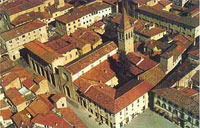 |
||||
Montefalco |
Sansepolcro |
|||
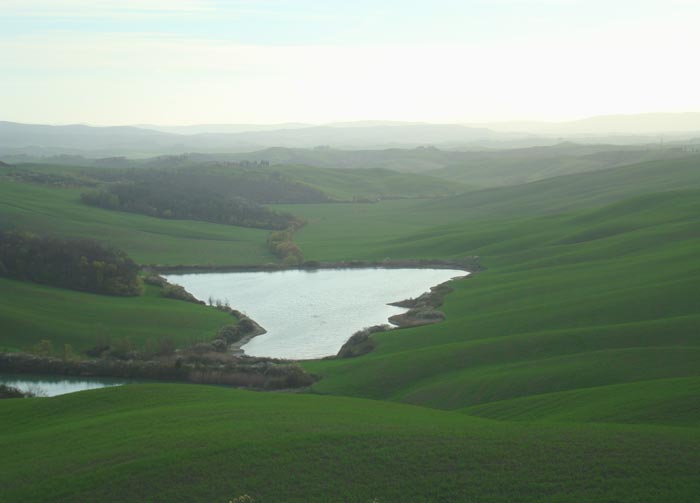 |
||||
Crete Senesi, surroundings of Podere Santa Pia |
||||

